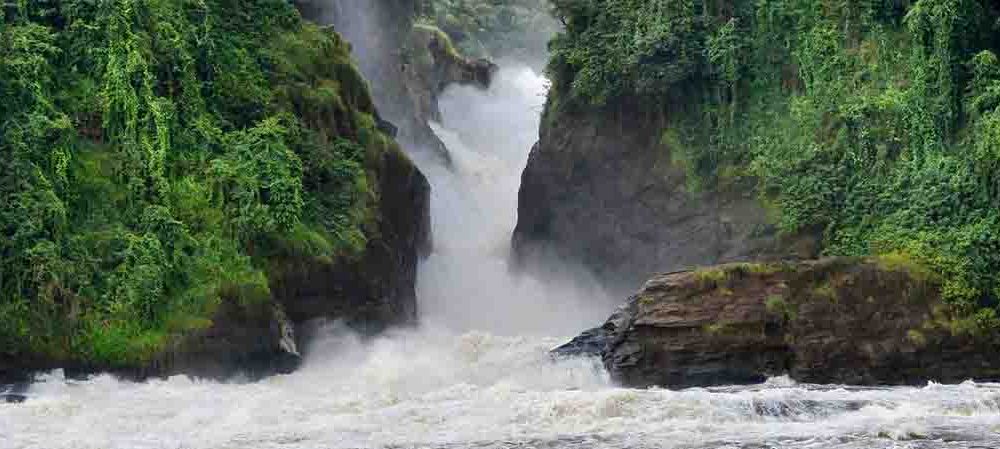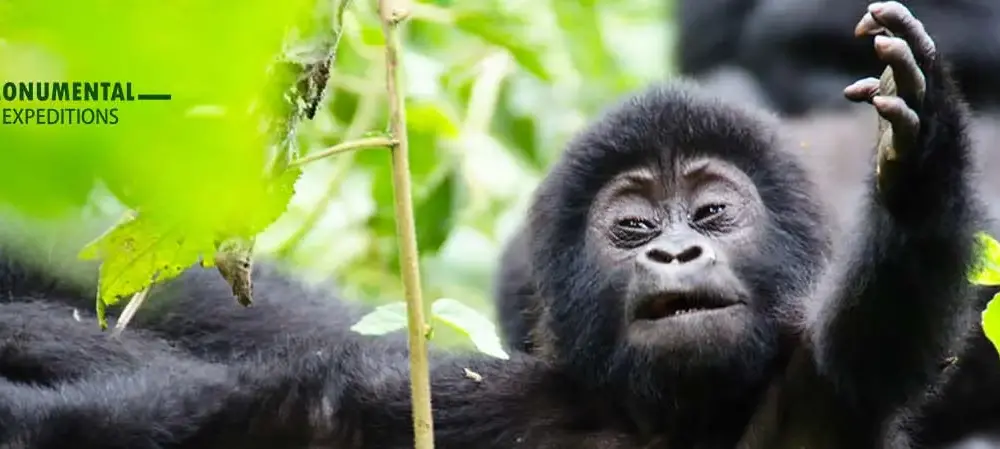Chimpanzee Tracking, Kibale National Park, sometimes known as "the primates' capital," is a one-of-a-kind wildlife…
What is the Lifespan of a Gorilla?
What is the Lifespan of a Gorilla?
Gorillas are among the most fascinating creatures on Earth. With their immense size, human-like behavior, and close genetic relationship to humans, gorillas capture the imagination of people worldwide. Understanding their lifespan, however, is not only important from a biological perspective but also plays a crucial role in conservation efforts to protect these incredible animals. In this article, we will explore the lifespan of gorillas in detail, including factors that influence their longevity, how long they live in the wild versus in captivity, and what it takes to ensure they live a long, healthy life.
1. The Average Lifespan of a Gorilla
The lifespan of a gorilla varies depending on factors such as its species, environment, diet, and the presence of threats like disease, poaching, or habitat loss. However, some general trends can be observed when it comes to the typical lifespan of these majestic primates.
- Wild Gorillas: In the wild, gorillas generally live for about 35 to 40 years. While this is the average lifespan, some gorillas may live even longer, reaching up to 50 years or more, although this is quite rare.
- Captive Gorillas: Gorillas that live in zoos or sanctuaries tend to live longer due to better medical care, a controlled environment, and a more predictable food supply. In captivity, gorillas can live up to 50-60 years, with some individuals even reaching 70 years. The record for the oldest gorilla in captivity is held by a female gorilla named Colo, who lived to be 60 years old in the Columbus Zoo and Aquarium.
The primary difference between the lifespan of wild and captive gorillas is the abundance of resources in captivity, such as veterinary care, food, and protection from predators and disease. In the wild, gorillas face challenges like food scarcity, predation, and injury that can shorten their lives.
2. Factors That Influence a Gorilla’s Lifespan
Several factors influence how long a gorilla will live. These factors range from genetics to environmental conditions, all of which contribute to their health and well-being. Below are the key elements that determine the lifespan of a gorilla:
2.1 Species of Gorilla
There are two main species of gorillas: the Eastern gorilla and the Western gorilla. Within these species, there are further subspecies, each with unique characteristics and environmental conditions.
- Mountain Gorillas: These gorillas, a subspecies of the Eastern gorilla, are typically found in the highland forests of Uganda, Rwanda, and the Democratic Republic of Congo (DRC). Mountain gorillas tend to have slightly shorter lifespans in the wild, averaging around 35 to 40 years.
- Lowland Gorillas: Both Eastern and Western lowland gorillas live in dense rainforests, primarily in the DRC, Cameroon, and other parts of Central and West Africa. Lowland gorillas tend to live a bit longer than their mountain cousins in the wild, with some reaching up to 50 years in captivity.
While the difference in lifespan between these subspecies is relatively minor, it underscores the impact of environmental stressors and food availability on a gorilla’s health.
2.2 Habitat and Environmental Conditions
Gorillas living in the wild face numerous challenges that impact their longevity. Habitat loss due to deforestation, poaching, and human-wildlife conflict can all contribute to a shorter lifespan. Wild gorillas must also contend with the constant threat of diseases like Ebola, which can decimate entire populations.
Conversely, gorillas in captivity are protected from such threats. They have consistent access to food, medical care, and protection from external dangers, which contributes to their longer lifespan.
2.3 Diet and Nutrition
Diet plays a critical role in a gorilla’s lifespan. In the wild, gorillas are herbivores, and their diet consists of a variety of leaves, stems, fruit, and bamboo shoots. Their food source is abundant, but seasonal changes can affect the availability of certain plants, which may result in nutritional deficiencies or food shortages.
In captivity, gorillas are provided with a controlled diet rich in the nutrients they need. This includes vegetables, fruits, and sometimes specially formulated diets to ensure that they receive the proper vitamins and minerals. Proper nutrition leads to fewer health issues, contributing to the longer lifespan of captive gorillas.
2.4 Social Structure and Stress
Gorillas are highly social animals, and their social structure plays a significant role in their well-being. A typical gorilla group, or “troop,” is led by a dominant male silverback, who protects the group and maintains order. Gorillas that live in stable, well-organized groups with strong social bonds tend to experience less stress and can live longer.
In contrast, gorillas that face social disruptions, such as being in isolation or fighting with other gorillas, may experience stress, which can have a negative impact on their health and longevity. In the wild, the social dynamics within a group can also determine an individual’s access to food and mating opportunities.
2.5 Medical Care and Human Intervention
Medical care is another major factor that influences the lifespan of gorillas. In the wild, gorillas do not have access to veterinary care, so injuries, infections, and illnesses can often go untreated, which can shorten their lives. In contrast, gorillas in zoos or sanctuaries have access to regular medical check-ups, vaccinations, and treatments for diseases, all of which contribute to their longer lifespan.
In fact, veterinary interventions, such as surgeries for injuries or the treatment of common ailments like arthritis, have helped gorillas in captivity live much longer than they would have in the wild.
3. Lifespan at Different Stages of Life
Like many other animals, gorillas undergo various life stages that affect their health and lifespan.
3.1 Infancy (0-3 years)
Infant gorillas are highly dependent on their mothers for survival during their first few years of life. Infant mortality rates are higher in the wild due to predation, disease, or the inability of young gorillas to fend for themselves in their early years. However, in the first few years, gorillas are particularly vulnerable to threats like malnutrition, disease outbreaks, and injury.
3.2 Adolescence (4-9 years)
At around four years old, gorillas start becoming more independent and are able to travel and forage with their group. However, adolescence is a critical period for gorillas as they develop physically and emotionally. In the wild, this is when they begin to form their social roles, and for males, it is when they start to compete for dominance. For female gorillas, adolescence marks the age at which they begin to mate and bear offspring.
3.3 Adulthood (10-35 years)
Adult gorillas are typically fully matured by the time they reach around 10 years old. This is when they experience the prime of their lives, with dominant males known as silverbacks leading their groups. In this stage, gorillas face fewer immediate threats but must navigate challenges such as food availability and potential conflicts with other groups. Adult gorillas in the wild are considered the most stable in terms of their health, though they are still susceptible to diseases and environmental threats.
3.4 Old Age (40+ years)
Old age for a gorilla generally begins around 40 years, with some reaching well into their 50s in the wild, though it is quite rare. In captivity, gorillas can live significantly longer, with many individuals reaching 50 or even 60 years. As gorillas age, they may experience reduced mobility, vision, and health problems, just as humans do. However, the presence of proper medical care in captivity allows older gorillas to live comfortable lives in their senior years.
![]()
4. Conservation Efforts and Longevity
The lifespan of gorillas is closely tied to conservation efforts. Habitat protection, anti-poaching measures, and efforts to combat disease are all vital to ensuring that gorillas can live long and healthy lives in the wild. Organizations like the Gorilla Doctors, The Dian Fossey Gorilla Fund, and Virunga National Park have dedicated resources to protect gorillas and ensure their survival for generations to come.
Through these efforts, we are not only helping to preserve the gorilla population but also enabling these magnificent creatures to live out their full lifespan in the wild. As we continue to support gorilla conservation, it is possible that future generations of gorillas will live longer, healthier lives, both in the wild and in captivity.
The lifespan of a gorilla is influenced by various factors, including species, environment, diet, and social dynamics. While wild gorillas typically live between 35-40 years, gorillas in captivity can reach 50-60 years due to better medical care and fewer environmental threats. However, factors such as habitat loss, poaching, disease, and climate change all pose significant challenges to their survival. By understanding these factors and supporting conservation efforts, we can help ensure that gorillas live long, healthy lives for generations to come.


